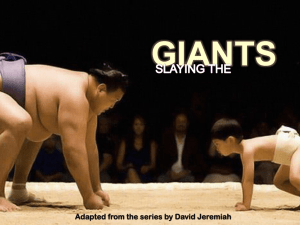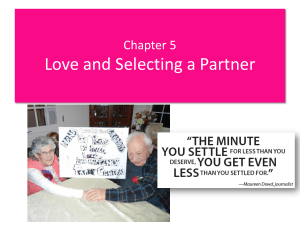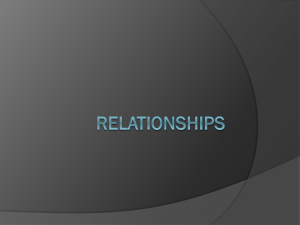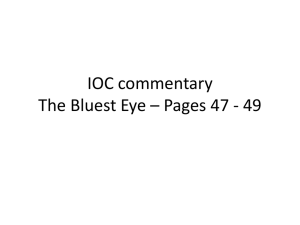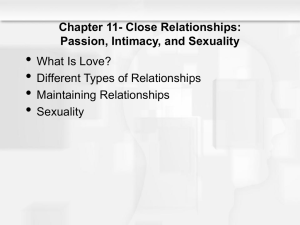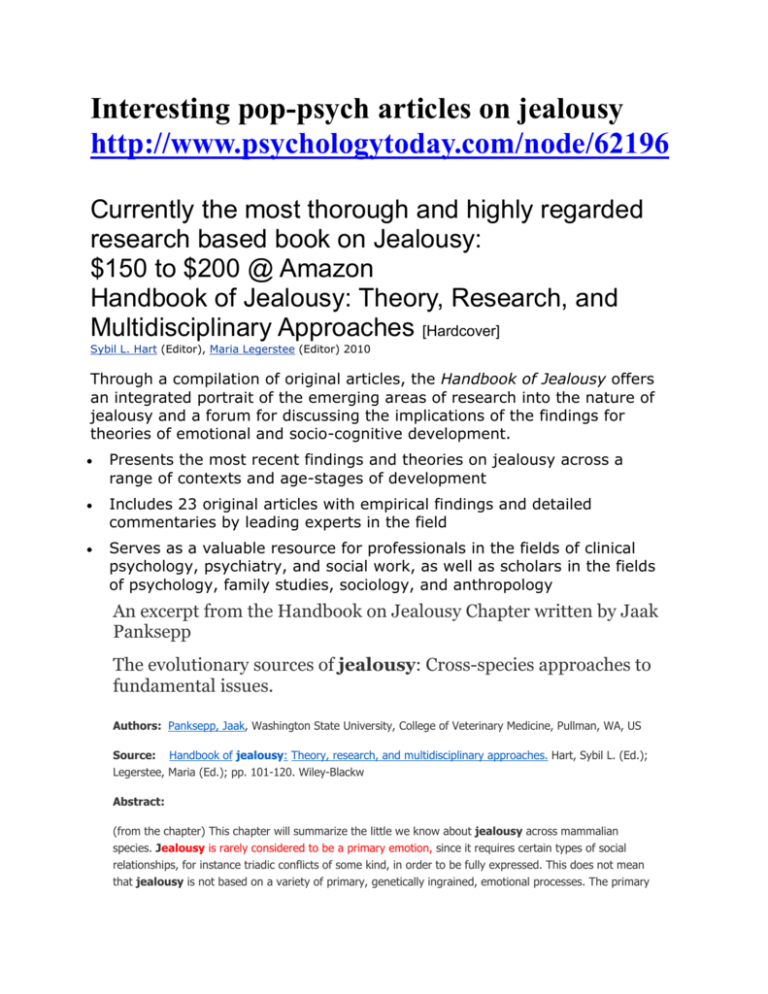
Interesting pop-psych articles on jealousy
http://www.psychologytoday.com/node/62196
Currently the most thorough and highly regarded
research based book on Jealousy:
$150 to $200 @ Amazon
Handbook of Jealousy: Theory, Research, and
Multidisciplinary Approaches [Hardcover]
Sybil L. Hart (Editor), Maria Legerstee (Editor) 2010
Through a compilation of original articles, the Handbook of Jealousy offers
an integrated portrait of the emerging areas of research into the nature of
jealousy and a forum for discussing the implications of the findings for
theories of emotional and socio-cognitive development.
Presents the most recent findings and theories on jealousy across a
range of contexts and age-stages of development
Includes 23 original articles with empirical findings and detailed
commentaries by leading experts in the field
Serves as a valuable resource for professionals in the fields of clinical
psychology, psychiatry, and social work, as well as scholars in the fields
of psychology, family studies, sociology, and anthropology
An excerpt from the Handbook on Jealousy Chapter written by Jaak
Panksepp
The evolutionary sources of jealousy: Cross-species approaches to
fundamental issues.
Authors: Panksepp, Jaak, Washington State University, College of Veterinary Medicine, Pullman, WA, US
Source: Handbook of jealousy: Theory, research, and multidisciplinary approaches. Hart, Sybil L. (Ed.);
Legerstee, Maria (Ed.); pp. 101-120. Wiley-Blackw
Abstract:
(from the chapter) This chapter will summarize the little we know about jealousy across mammalian
species. Jealousy is rarely considered to be a primary emotion, since it requires certain types of social
relationships, for instance triadic conflicts of some kind, in order to be fully expressed. This does not mean
that jealousy is not based on a variety of primary, genetically ingrained, emotional processes. The primary
feelings experienced at the loss of a valued social relationship, as might be triggered by the conviction of a
spouse's infidelity, can vary enormously among different people.Jealousy ultimately becomes that affectively
complex emotion whose adaptive value is to counteract severance of existing social bonds. I would advocate the
common view that an affective precondition for the emergence of human jealousy is the existence of an
established social bond that is threatened by the perceived intervention of a third party—a witting or unwitting
interloper. Although jealousy is not a basic emotion, it is certainly evolutionarily prepared to emerge
developmentally from the types of MindBrain dynamics that can defensibly be deemed basic emotions.Jealousy,
just like the many other secondary/tertiary emotions that rely on learning and higher cognitive activities,
becomes manifest through existential experiences of living in social worlds. There is neither a single genetically
pre-ordained evolutionary brain network nor a single emotional feeling that can define jealousy. Still, of all the
socially constructed emotions, jealousy may be especially closely tethered to the basic emotional systems—
more clearly "prepared" to take on its core form than other social emotions such as embarrassment, guilt, and
shame, not to mention the yet higher-level social emotions such as empathy, envy, and social disgust. The
intimate proximity of jealousy to several basic emotional processes may eventually allow animal models to
provide robust empirical strategies to inform us about the neural underpinnings of jealousy, comparable to
those that have already illuminated various basic emotions (Panksepp, 1998a, 2005a). (PsycINFO Database
Record (c) 2012 APA, all rights reserved)
Another book I found very interesting:
The Dangerous Passion
Why Jealousy Is as Necessary as Love and Sex
By DAVID M. BUSS
Click her to read a chapter of this book…very interesting and well written
http://www.nytimes.com/books/first/b/buss-passion.html
Authors: Leahy RL ; Tirch DD American Institute for Cognitive Therapy, drdennis@mac.com
Source: International Journal of Cognitive Therapy (INT J COGNIT THER), 2008 Feb; 1(1): 18-32 (43 ref)
Subjects:
Cognitive Therapy -- Methods
Jealousy
Models, Psychological
Jealousy is a multidimensional cognitive, emotional, behavioral and interpersonal phenomenon. Jealousy can be a
destructive and often dangerous emotional and interpersonal response to threats to a valued relationship. Despite
the importance of jealousy as an issue for couples, there has been relatively little attention to this
problem. Jealousy is a form of angry, agitated worry, whose goal is to anticipate and avoid surprise and betrayal. A
meta-emotional model is described, emphasizing the normalization of jealous emotion, distinguishing between
"feeling" and "acting on" jealousy and linking jealousy to emotional processing, intolerance of uncertainty and
thought fusion. Mindfulness and acceptance based approaches can be used that emphasize cultivating a capacity to
distance and de-center from disturbing thoughts and feelings, overcoming attempts at experiential avoidance that
may amplify jealousy, disrupting thought-reality fusion, and establishing a non-judgmental observing stance, from
which adaptive behaviors may proceed.
Department of Psychology, National University, Redding Academic Center, Redding, CA
Source:
Journal of Couple & Relationship Therapy (J COUPLE RELATIONSHIP THER), 2008; 7(3): 210-29 (50 ref)
Major Subjects:
Interpersonal Relations
Jealousy
Perception
Psychotherapists
One-hundred and fifty-nine randomly selected members of the American Association for Marriage and
Family Therapy responded to a questionnaire assessing perceptions of prevalence of romantic jealousy as
a problem for their own clients in therapy, perceptions of contributing factors, estimated frequencies of
emotions and coping behaviors of jealous clients, and open-ended suggestions of useful goals and
techniques for psychotherapy of jealousy. Results indicate that jealousy was judged to be the major or a
major presenting problem in about one-third of all clients who seek psychotherapy, especially for those
under age 45. Therapists' suggestions for psychotherapy were reliably coded into nine different categories
of intervention. Therapists' perceptions of the causes and nature of jealousy are generally consistent with
results found in research on nonclinical samples.
Sex differences in jealousy: a contribution from attachment
theory.
Authors: Levy KN; Kelly KM
Author Address: Department of Psychology, Pennsylvania State University, University Park, PA 16803,
USA. klevy@psu.edu
Source: Psychological Science [Psychol Sci] 2010 Feb; Vol. 21 (2), pp. 168-73. Date of Electronic Publication: 2009
Dec 22.
Jealousy*
Object Attachment*
Sex Characteristics*
Adolescent ; Adult ; Biological Evolution ; Emotions ; Extramarital
Relations ; Female ; Humans ; Male ; Middle Aged ; Parenting/psychology ; Social Values ; Young Adult
Abstract:
Studies have found that more men than women endorse sexual infidelity as more distressing than emotional
infidelity, whereas more women than men endorse emotional infidelity as more distressing than sexual
infidelity. Some evolutionary psychologists have proposed that this sex difference can be best conceptualized as
reflecting evolution-based differences in parental investment that produce a need for paternity certainty among men
and a need for male investment in offspring among women. Nonetheless, a conspicuous subset of men report
emotional infidelity as more distressing than sexual infidelity. Current theorizing explains between-sex differences but
not within-sex differences. We hypothesized that attachment-style differences may help to explain both betweenand within-sex differences in jealousy. As hypothesized, dismissing avoidant participants reported
more jealousy regarding sexual than emotional infidelity (64.8%), and secure participants, including secure men,
reported more jealousy regarding emotional than sexual infidelity (77.3%), chi(2)(3, N = 411) = 45.03, p < .001. A
series of sequential logistic regression analyses indicated significant moderation of the sex-jealousy relationship by
attachment style. Implications of an attachment perspective are discussed.

